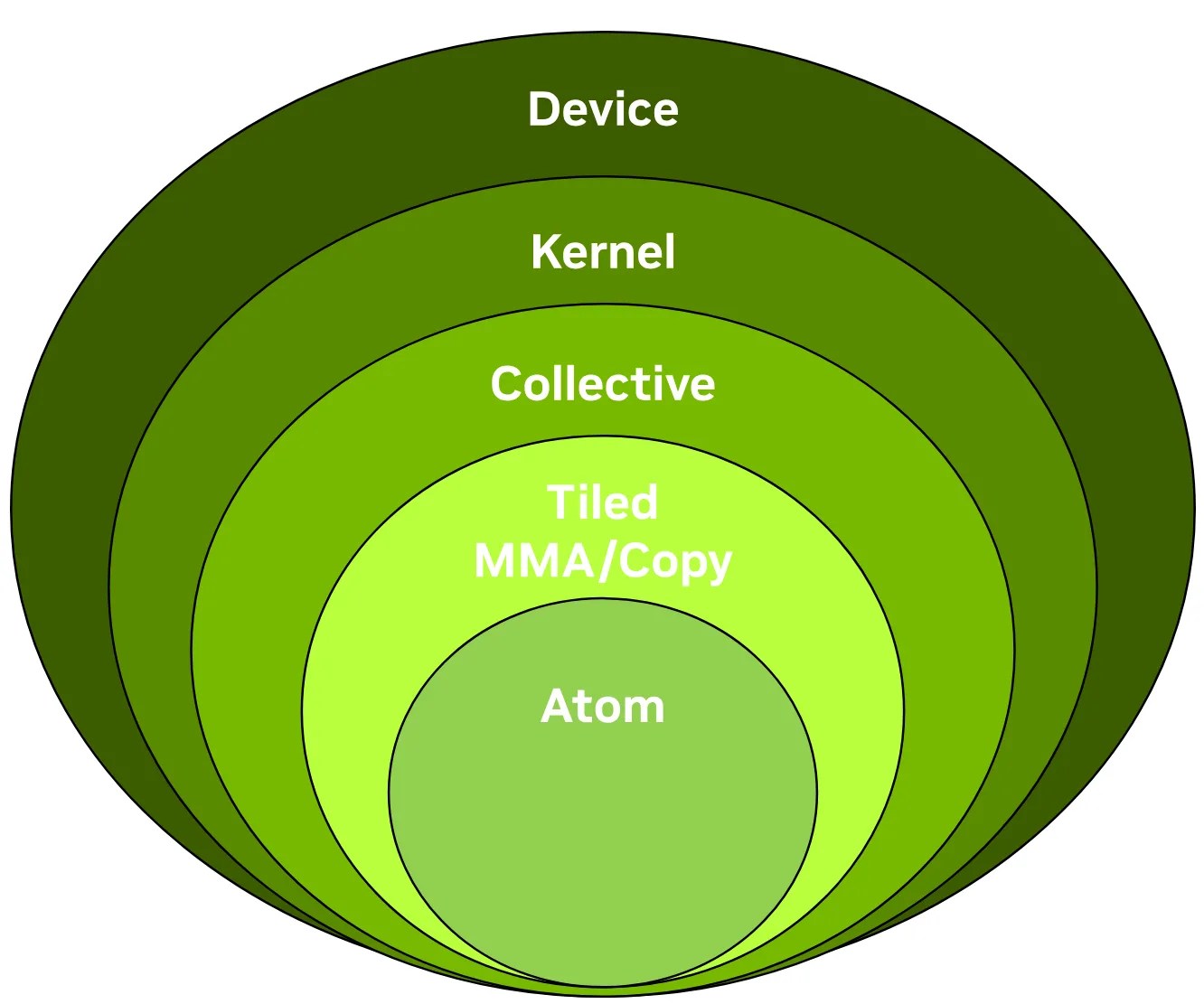-
A User’s Guide to FlexAttention in FlashAttention CuTe DSL
|

Many variants of attention (Vaswani et al., 2017) have become popular in recent years, for reasons related to performance and model quality. These include: The PyTorch team at Meta recognized that most of these variants (including all of the above) can be unified under one elegant framework, dubbed FlexAttention (Guessous et al., 2024). This simple
-
Categorical Foundations for CuTe Layouts
|

In GPU programming, performance depends critically on how data is stored and accessed in memory. While the data we care about is typically multi-dimensional, the GPU’s memory is fundamentally one-dimensional. This means that when we want to load, store, or otherwise manipulate data, we need to map its multi-dimensional logical coordinates to one-dimensional physical coordinates.
-
CUTLASS 3.x APIs: Orthogonal, Reusable, and Composable Abstractions for GEMM Kernel Design (External)
|

In this blog post presented on the NVIDIA technical blog, we give a concise introduction to the CUTLASS 3.x APIs, focusing on the collective, kernel, and device layers and the functionality of the collective builders. This post was authored in conjunction with members of the CUTLASS team.
-
CUTLASS Tutorial: Sub-byte GEMM on NVIDIA® Blackwell GPUs

Welcome to part 3 of our series investigating GEMM on the NVIDIA Blackwell architecture. In parts 1 and 2, we looked at the Tensory Memory and 2 SM capabilities of the new Blackwell Tensor Core UMMA instructions and how to work with them in CUTLASS. In this part, we introduce low-precision computation and then discuss
-
CUTLASS Tutorial: GEMM with Thread Block Clusters on NVIDIA® Blackwell GPUs

Welcome to part two of our series investigating GEMM on the NVIDIA Blackwell architecture. In part 1, we introduced some key new features available on NVIDIA Blackwell GPUs, including Tensor Memory, and went over how to write a simple CUTLASS GEMM kernel that uses the new UMMA instructions (tcgen05.mma) to target the Blackwell Tensor Cores.
-
CUTLASS Tutorial: Writing GEMM Kernels Using Tensor Memory For NVIDIA® Blackwell GPUs

The NVIDIA Blackwell architecture introduces some new features that significantly change the shape of a GEMM kernel. In this series of posts, we explore the new features available on Blackwell and examine how to write CUTLASS GEMM kernels that utilize these new features by drawing on the CuTe tutorial examples. The goal of this series

2805 Bowers Ave, Santa Clara, CA 95051 | 408-730-2275
research@colfax-intl.com